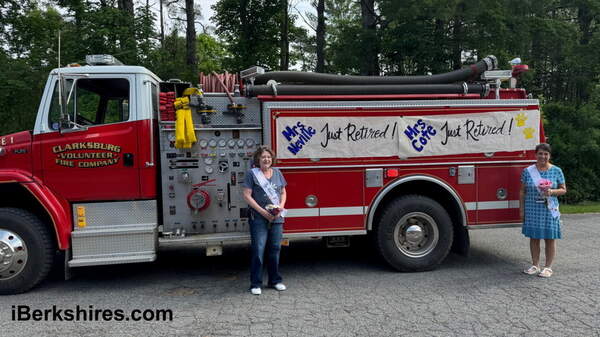Clarksburg Could Vote on Dam Removal
 Funds are running out for the removal of the deteriorating Briggsville Dam. |
The town and entities involved in the removal are looking at other funding options but it may come down to the taxpayers deciding if they're willing to foot part of the bill.
The Selectmen last Wednesday were in consensus to move forward to a town meeting once solid figures on the dam's removal were obtained within the next two months and, more importantly, if no further funding could be found. The matter had been raised at a June meeting but delayed until all three Selectmen were in attendance.
Selectman Carl McKinney, who had been adamant on not spending town funds, said it may be the only option.
"My concern, clearly, is there's 136 part-time jobs, 28 to 30 full-time jobs at risk and the real concern, in addition to this, is we'll have these two huge vacant mill buildings in the center of our town deteriorating, unused, with a $700,000 liability attached because of the condition of the dam," he said. "I readily admit I was against funding the dam ... [but] it could potentially become our liability if we end up with the buildings and have to take them down."
The dam had once powered the Strong-Hewat Mill, a complex now occupied by Cascade School Supplies, which can't afford to shoulder the full cost. Town officials fear the company could walk away, saddling it with the buildings and the nonfunctioning dam. The building is owned by Clarksburg Realty, which leased the property to the school supply company about six years ago.
Conservation group American Rivers has been representing Cascade in spearheading the removal project; along with the town, other participating agencies include the state's Division of Ecological Restoration, Hoosuck Chapter of Trout Unlimited, the Hoosic River Watershed Associaton and U.S. Fish and Wildlife. The goal has been to remove the dam, deemed a hazard by the state, and restore the North Branch of the Hoosic River to its natural flow for fish and wildlife.
Breaching the dam would also remove the potential for flooding along the stretch of the river. That possibility could open the way to more federal funding for flood prevention, although Town Administrator Michael Canales said that funding may not be possible until 2012 as part of the Berkshire Regional Planning Commission's hazard plan.
Right now, the project could lose $86,000 in matching grants set to expire this fall. The total cost for the project is estimated at $700,000 but all the engineering work as been done, leaving between $400,000 and $500,000 necessary for the actual removal.
"Everything we have right now is projected costs so they're trying to go out and get a solid cost for the dam removal," said Canales. American Riverways is expected to publish a request for proposals within the next month with a 60-day waiver on obtaining the funds. "At that point, then they'd come back to us, Cascade and other interested parties to see what other money is available."
The cost could come in higher, or could be lower. If other funding doesn't come through, town officials will schedule a special town meeting likely sometime in September to ask taxpayers if they're willing to dip into the $315,000 stabilization to pay whatever the balance is. It would require a two-thirds vote use funds from that account.
"It's either going to have a lot of support and pass or it's going to go down in flames but it won't be for lack of effort," said McKinney.















